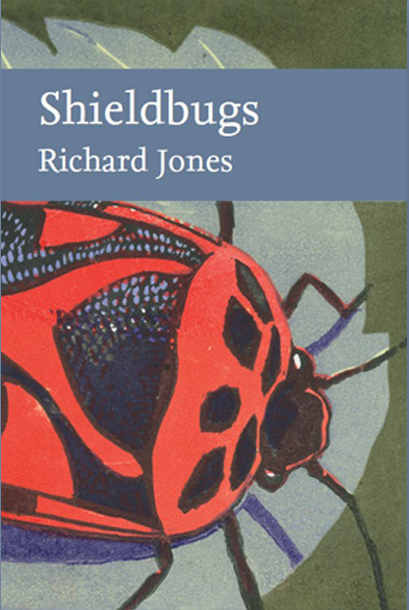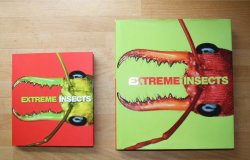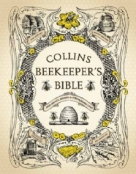No matter how small and mean is an insect, there’s an entomologist, somewhere, who thinks it wonderful. Lots of people love butterflies, and moths, and bees, and dragonflies. Dung beetles are among my own favourites. Elsewhere there are fans of stick insects, earwigs, fleas and hissing cockroaches. Even ants, apparently, have their followers.
But, to a man (or woman), there is one insect universally loathed by entomologists of all walks of life. This one.
The museum beetle, Anthrenus verbasci, is a small (2.0-2.5 mm) globular little beast, very pretty under the microscope because of its mottled variegated scales. But it is the scourge of entomologists the world over. As its name suggests, it haunts museums — in particular the cases of stuffed birds and animals, stores of dried animal skins and drawers of pinned insects.
It is one of several similar species, including the more appropriately named Anthrenus museorum, that can wreak havoc among the museums’ treasured collections, unless each and every item is examined on a rolling check every year or so. Large items, like stuffed birds and animals are often on display and chewings are immediately noticed. But trays and trays of pinned and carded insect specimens locked away in dusty mahogany cabinets in the store rooms can go for decades unexamined; it is not until some visiting expert tries to check out the particular family or genus they’ve been working on, that the Anthrenus infestation is revealed. All that now remains are rows and rows of neatly arrayed pins and piles of dust. No, entomologists do not like Anthrenus.
It is the tiny bristly larvae that do the damage, chewing their way through the insect specmens, often from the inside out. With generation times of only a few days or weeks, it is not long before there is an army of Anthrenus larvae. Oh, entomologists grit their teeth and curse softly under their breath at the thought.
It might seem odd, at first, that Anthrenus should have found this strange little ecological niche in which to have evolved their annoying and destructive lives. And they rather beg the question, where did museum beetles live before there were museums?
Museum beetles do not just live in museums, they also live in homes, where they go by another name — carpet beetles. Here, the same fuzzy larvae, sometimes endearingly called woolly bears, chew away at the Axminster or the Wilton. Not that this gets us much further; OK so where did they live before humans had carpets? Where did they live in the many rug-free millennia before the intricacies of the Persian or the Turkish knot, before the loom, before even the first sabre-toothed tiger skin was cast down onto the cold rough cave floor by Mr and Mrs Neanderthal?
It seems they probably lived in bird and small mammal nests. Despite the fact that museum (or carpet) beetles now frequent our very modern homes and learned institutions, their metabolism is still governed by their digestion of the moulted feathers and fur they first tasted way back in evolutionary history. In the home they find ready nutrition in the wool of our carpets. They will also eat silk (another animal fibre), feathers (whether boas or stuffed birds), furs (stoles, coats and more stuffed displays). And they will attack the chitin shells of museum insect specimens.
The occasional Anthrenus is also sometimes fished out of empty bee and wasp nests. These are often made in the same places as bird and animal nests, either in hollow trees, loft spaces or hedge bottoms. Here they appear to be devouring the remains of dead insects littering the lower regions of the combs. There is very little evolutionary leap from dead bees and the remains of the wasps’ prey, to the insect specimens hoarded away in the local museum.
I don’t like Anthrenus. They have devoured plenty of specimens in my relatively small insect collection including, recently, a large number of parasitic flies (family Tachinidae) stored in a rather old and obviously not Anthrenus-proof store box.
But I do have a soft spot for one of its close relatives — Ctesias serra. The adult beetles are slightly larger, flatter and shinier then Anthrenus, and the bristly larvae are lovely.
Ctesias follows a quiet and secretive life on old trees where it ekes out a living eating dead insects. These it pinches from the snarled and matted webs of the the several types of spiders that live underneath the loose and peeling bark, or inside hollow trunks. It tiptoes about in the dark nibbling at the dry husks, but is itself immune to spider attack. If a spider comes near, Ctesias starts wiggling its tail, at high speed. This sets up jamming signals across the silk threads of the webs. The spiders are unable to work out where the vibrations are coming from, so cannot calculate a pounce. A spider would only get a mouthful of broken bristles if it tried.
Ctesias is a relatively uncommon species, but occurs on a wide variety of trees, including some of the large street trees here in East Dulwich. Unlike Anthrenus, it does not find abundant food in bird or small mammal nests, nor has it invaded bee or wasp colonies. It has certainly not come indoors to munch the carpet or the soft furnishings. And it has never been found in insect collections. I like Ctesias. I like it a lot.



























Nothing is bugging me, I love all insects even the museum-one’s
Pingback: Specimen number 1 | Bugman Jones
Pingback: The ghosts of collections past | Bugman Jones